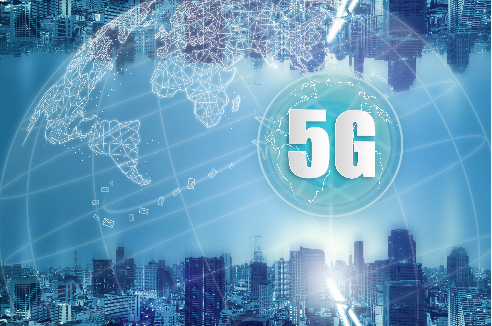eSIM and 5G: The Beginning of a New Era for the IoT Ecosystem

eSIM and 5G: The Beginning of a New Era for the IoT Ecosystem
Apple's recent announcement that the eSIM iPhone will be available only in the US market is seen as a milestone in the history of the telecom industry. This is also its first step to make SIM a pass for years to come. In fact, this is an important indicator of future consumer and market awareness.

The eSIM is not just the evolution of the SIM card from physical to virtual. It is expected to have a huge impact and added value to the Internet of Things (IoT).
Helps IoT-based device transformation to a large extent by providing flexibility to original equipment manufacturers (OEMs) to build new product lines for global deployment, especially in the industrial IoT space, including sensors, processors , systems and platforms; enterprises will use eSIM to improve operational efficiency and other industry-specific use cases.
GSMA (Global System for Mobile Communications) Intelligence predicts that the total number of eSIM smartphone connections will reach 6.7 billion by 2030. This would account for 76% of total smartphone connections, which is a huge percentage in the adoption of eSIM devices.
So, what's new with eSIM?
Each technological advancement removes some barriers and contributes to the entire ecosystem by facilitating new use cases and ultimately simplifying consumers’ lives, improving the operational efficiency of the industry, or some other monetized benefit. Here, eSIM technology is more concerned with overall cost aspects, security, free roaming and other legacy inconvenience limitations, which are all tied to a subscription model.
End users are now free to not connect to a single operator/subscription and switch to any operator on demand anytime, anywhere.
Although even today, it is no longer mandatory to buy a plastic SIM card. But when traveling to a new country, as the eSIM remote configuration feature will work well for users to get the best subscription in their destination country.
The following are eSIM smartphone predictions, heralding where the tide is turning for eSIM phones, and where each manufacturer is heading in the future:
IoT/M2M Growth with eSIM:
The market for machine-to-machine (M2M) devices, low-cost sensors and systems is growing rapidly, which in itself is forming an entire IoT ecosystem.
These devices take advantage of mobile connectivity, often using eSIMs, which are most likely to disrupt various inefficient processes, and harness the power of IoT.
By analyzing the data points generated, connectivity will be the backbone for any industry to thrive and deliver continuous innovation.
Cellular connectivity is becoming more and more popular in IoT devices for the following reasons:
- Simple: It's future proof and flexible subscriptions that keep devices connected throughout the eSIM's lifetime.
- Scalability: Any small IoT setup can be easily leveraged through eSIM, ideal for large scale IoT.
- Security and cost-effectiveness: With its secure tamper-proof and encryption logic, eSIM will be the safest choice on all security parameters.
Taking into account the TCA data, M2M eSIM shipments surged 38% by the first quarter of 2022 and are expected to grow further.
Will 5G be the catalyst for IoT deployments?
That's a big affirmation because 5G is designed to connect almost everyone and everything. It has a strong ability to provide high-speed internet, low latency, higher availability and better reliability.
With its further capabilities, massively connect global M2M devices and almost every machine. This is what humans need. In this case, cellular connectivity will play a key role.
Following 4G, 5G will also offer LPWA (Low Power Wide Area) connectivity. LPWA is specially used for IoT and M2M communication, and is especially suitable for Industry 4.0 in addition to metering, fleet management and other uses.
In summary, the main categories of 5G usage will be defined as follows:
5G potential and growth
The potential for 5G to transform industry operations will be enormous as it will enable use cases that do not even exist today. Organizations will see 5G as a major requirement that matches their planned IoT usage roadmap. From a connectivity perspective, eSIM is poised for staggering growth in the consumer and IoT sectors, and 5G will be a significant enabler in the coming era, which will accelerate IoT growth.
In general, industries are considering launching IoT projects for digital transformation to bridge technology gaps and innovate new revenue streams.
As the adoption of the IoT device market will enter the fast lane, this will trigger the need for management of these devices, which will eventually lead to an increase in eSIM development with different uses.
The Indian government will also support the growth of IoT adoption such as smart cities, Ministry of Transport initiatives, etc.
What's next?
There are various advantages and disadvantages to any innovation.
Industries in the Indian ecosystem are expected to grow at a faster rate. But at the same time, adversity must be addressed through the collaboration and joint efforts of MNOs, eSIM vendors, sensor manufacturers and industry-specific leaders to roll out and limit the best impact of 5G connectivity.
As eSIM adaptation and awareness increase, the industry priority must be to facilitate secure, scalable, and standard ways of deploying jobs to meet the unique needs of a variety of emerging uses across different industries. This will require industry stakeholders across the connectivity system to support trusted connectivity for consumers and the M2M sector.
The industry will have to develop an IoT strategy early on to ensure it can ride the wave of digital transformation and generate a variety of other revenue streams, while ultimately transforming the consumer experience as well.